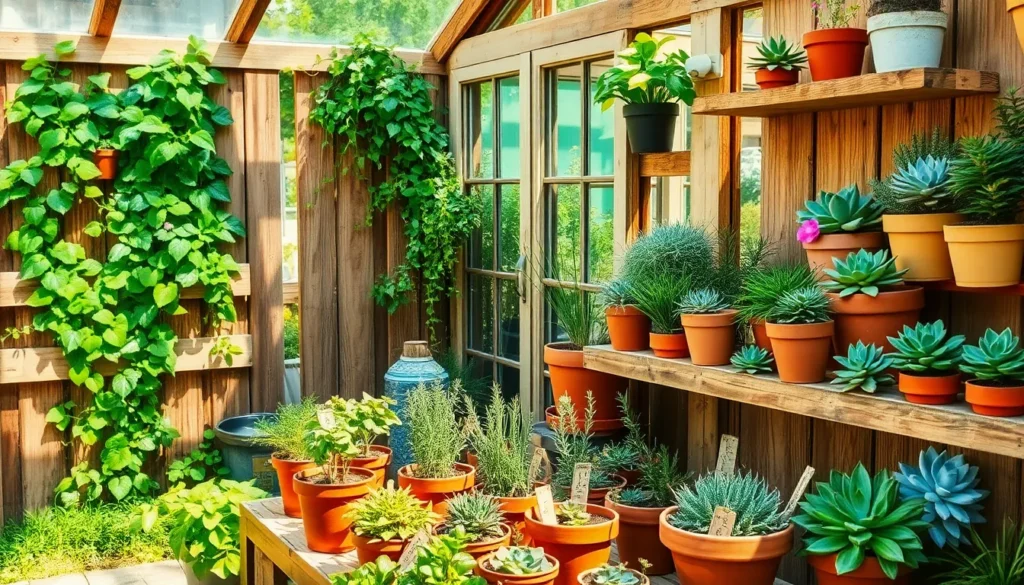Creating a backyard greenhouse can feel like unlocking a secret garden, where each leaf, bloom, and tendril tells a story of growth and resilience. Whether you’re just planting the seeds of your gardening journey or you’re a seasoned green thumb seeking new challenges, a greenhouse offers a world of possibilities right at your fingertips. It serves as a sanctuary for plants and a creative outlet for gardeners, allowing you to extend your growing season and experiment with a variety of projects that bring your gardening dreams to life.
This article will guide you through 12 essential greenhouse projects that can transform your backyard into a thriving ecosystem. From designing efficient watering systems to choosing the perfect crops for year-round cultivation, you’ll discover practical, step-by-step ideas that cater to both novice and expert gardeners. Each project is crafted to enhance not only the health of your plants but also your own gardening skills, making this a truly rewarding adventure. Whether you’re looking to cultivate exotic orchids or simply wish to enjoy fresh herbs throughout the year, these projects will inspire and empower you to make the most of your greenhouse space.
Choosing the Ideal Greenhouse Type
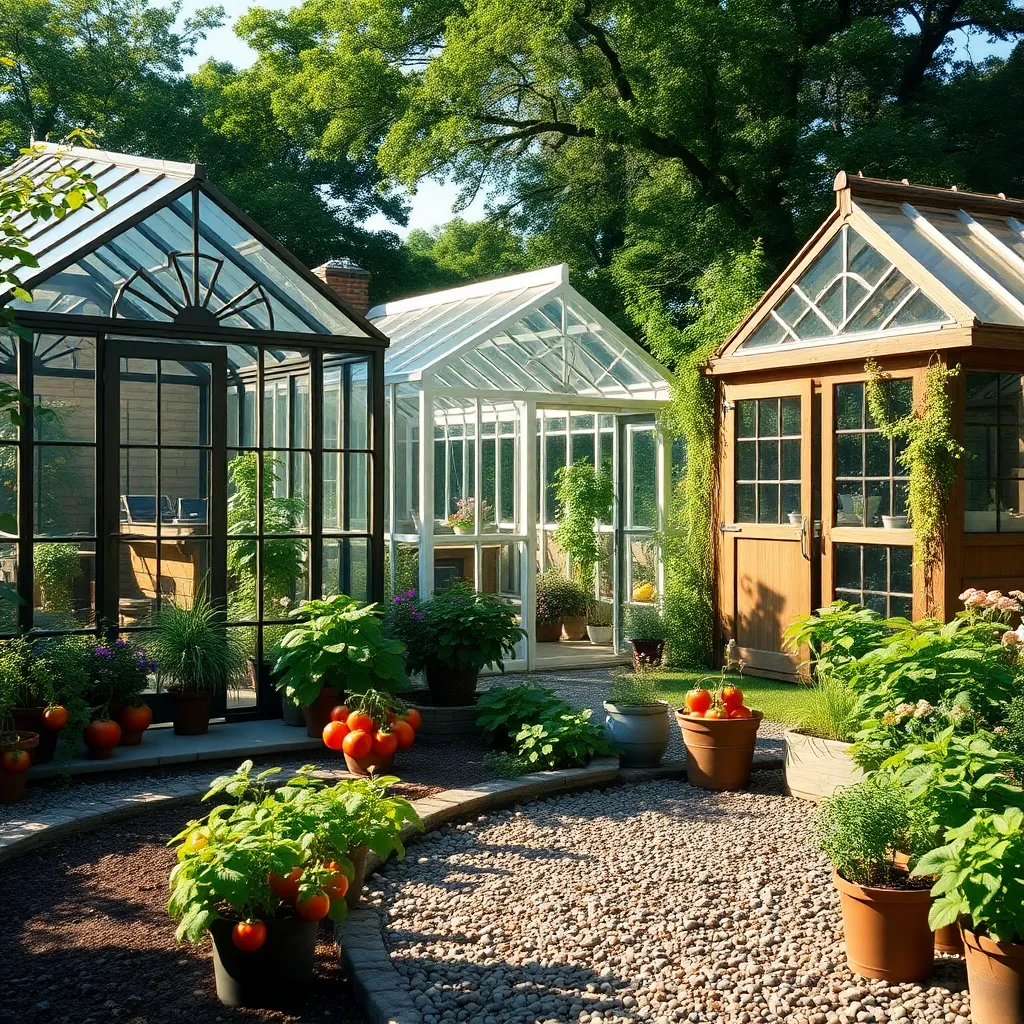
Choosing the right type of greenhouse is crucial for creating an optimal growing environment for your plants. Start by considering the climate in your area and the specific needs of the plants you wish to grow.
If you live in a region with harsh winters, a **glass or polycarbonate greenhouse** may be ideal due to its excellent insulation properties. These materials help maintain warmth and allow abundant light, creating a suitable environment for growing a wide range of plants year-round.
For gardeners in milder climates, a **simple hoop house or polytunnel** can be both cost-effective and efficient. These structures provide adequate protection from wind and rain while allowing easy ventilation, a crucial factor for preventing mold and diseases in plants.
Think about the size of the structure based on your available space and gardening goals. A small, portable greenhouse can be perfect for beginners or those with limited space, while more experienced gardeners might opt for larger, custom-built structures to accommodate a diverse plant collection.
Consider the type of foundation you will use, as this can affect the stability and durability of your greenhouse. Raised beds or gravel bases can improve drainage and soil quality, which are key to healthy plant growth.
- Choose a location with at least six hours of sunlight daily to maximize plant growth.
- Ensure easy access to water sources for efficient irrigation.
- Incorporate shelving or benches to maximize space utilization.
Remember, the ultimate goal is to create a controlled environment that meets the needs of your plants. With careful planning and the right structure, your greenhouse can become a productive and rewarding addition to your backyard.
Building a Sturdy Greenhouse Frame
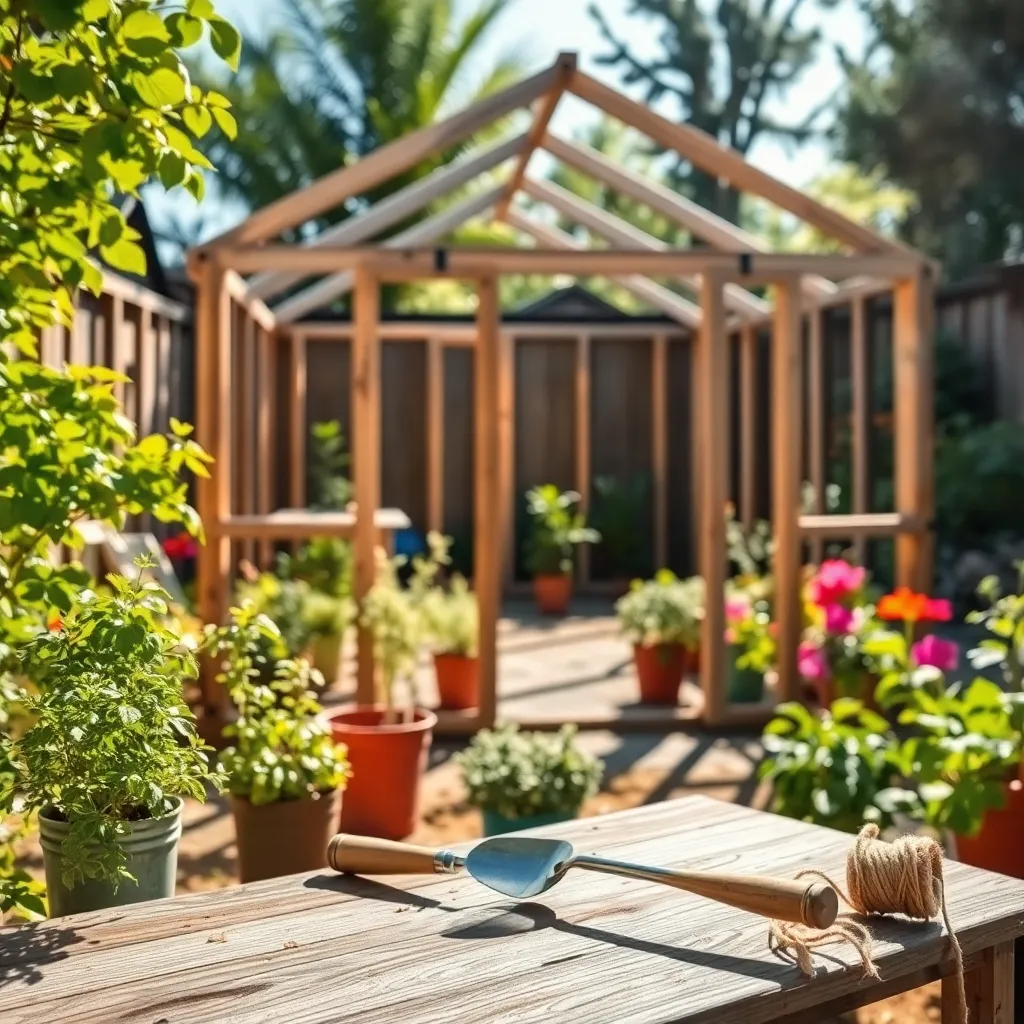
When building a sturdy greenhouse frame, start by choosing the right materials to ensure longevity and stability. Common choices include wood, aluminum, and galvanized steel, each offering unique advantages like durability or ease of assembly.
Wood is a popular choice for its natural insulation properties and aesthetic appeal, but it requires regular maintenance to prevent rot. Aluminum frames, on the other hand, are lightweight and resist rust, making them a low-maintenance option for many gardeners.
For those seeking extra strength, galvanized steel offers superior durability, especially in areas prone to extreme weather. Ensure all materials are treated or coated appropriately to withstand your local climate and protect against corrosion.
A critical step in frame construction is ensuring a level foundation, which provides a stable base and extends the life of your greenhouse. Use a spirit level to check your foundation before securing the frame, and adjust as necessary for a perfect fit.
Once your frame is up, use high-quality fasteners to connect the pieces securely and provide additional support against wind and other elements. Consider using stainless steel bolts and screws, as they offer excellent resistance to rust and add to the frame’s overall robustness.
To further enhance structural integrity, add cross-bracing to the frame, which can help withstand heavy winds and prevent warping. This step is crucial in regions with frequent storms, ensuring your greenhouse stands firm all year round.
Insulation Techniques for Year-Round Growth

To ensure your greenhouse supports year-round growth, consider using insulation techniques that maintain stable temperatures. One effective method is to line the interior walls with bubble wrap, which provides an extra layer of thermal protection without breaking the bank.
Another approach is to use thermal mass materials, such as water barrels or stone, which absorb heat during the day and release it at night. This technique is particularly beneficial in regions with significant temperature fluctuations, as it helps maintain a consistent environment for your plants.
For those seeking advanced solutions, installing a geothermal heat pump can be an excellent investment. While this option requires an initial setup cost, it provides efficient heating by utilizing the earth’s natural warmth, ensuring optimal growing conditions even in the coldest months.
Incorporating fans or vents can also play a crucial role in regulating temperature and humidity inside your greenhouse. Proper ventilation prevents overheating and reduces the risk of fungal diseases, promoting healthier plant growth throughout the year.
Ventilation Solutions for Optimal Airflow
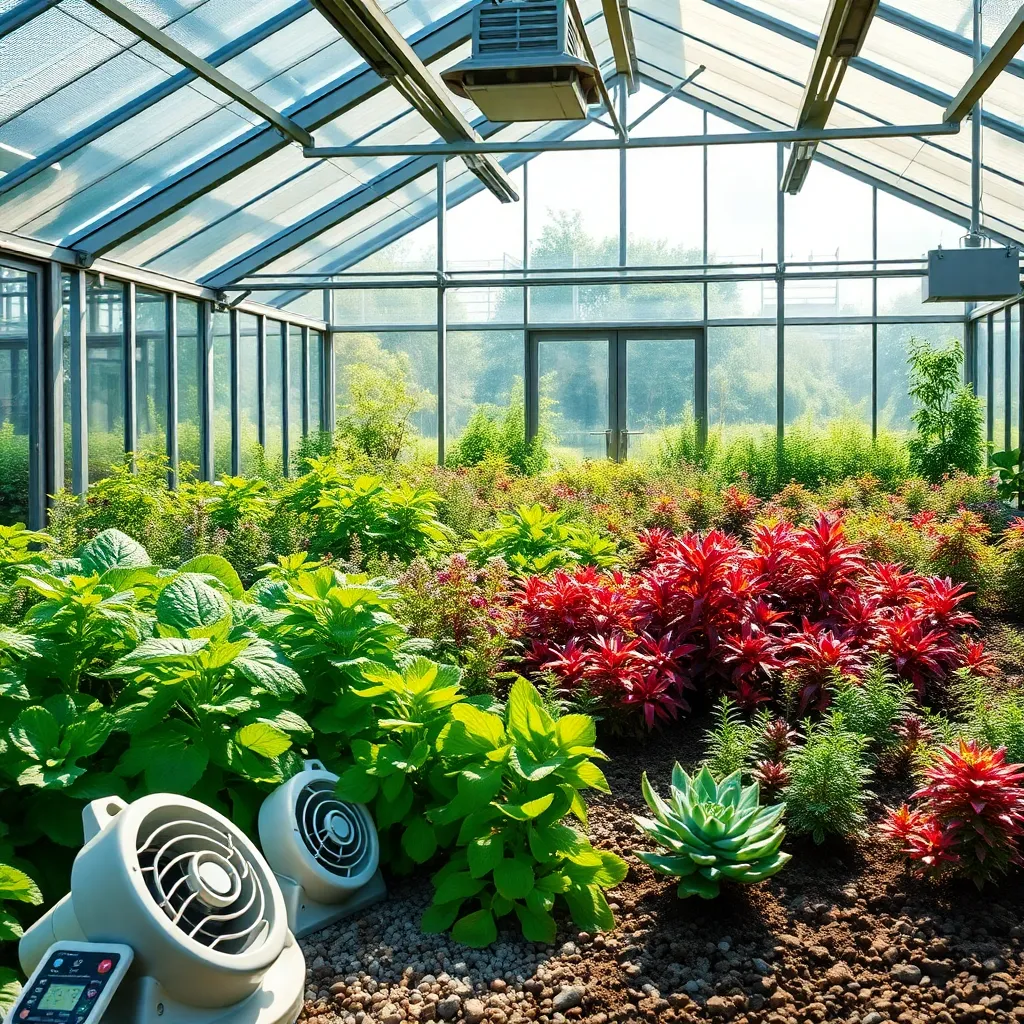
Creating optimal airflow in your greenhouse is essential for maintaining healthy plants and preventing issues like mold or mildew. Start by ensuring your greenhouse has adequate openings, such as windows or vents, that can be adjusted depending on the weather conditions.
Strategically placing fans can significantly improve air circulation, helping to regulate both temperature and humidity. Position oscillating fans at different heights to create a consistent airflow that reaches all parts of the greenhouse.
Installing an automatic vent opener can be a valuable addition, especially for gardeners who cannot regularly monitor their greenhouse. These devices open vents when temperatures rise, allowing excess heat to escape and maintaining a stable environment for your plants.
Consider incorporating a shade cloth during the hottest months to reduce the heat load inside your greenhouse. This not only helps manage temperature but also reduces the need for excessive ventilation, allowing you to balance airflow while protecting plants from intense sunlight.
Automating Temperature Control Systems
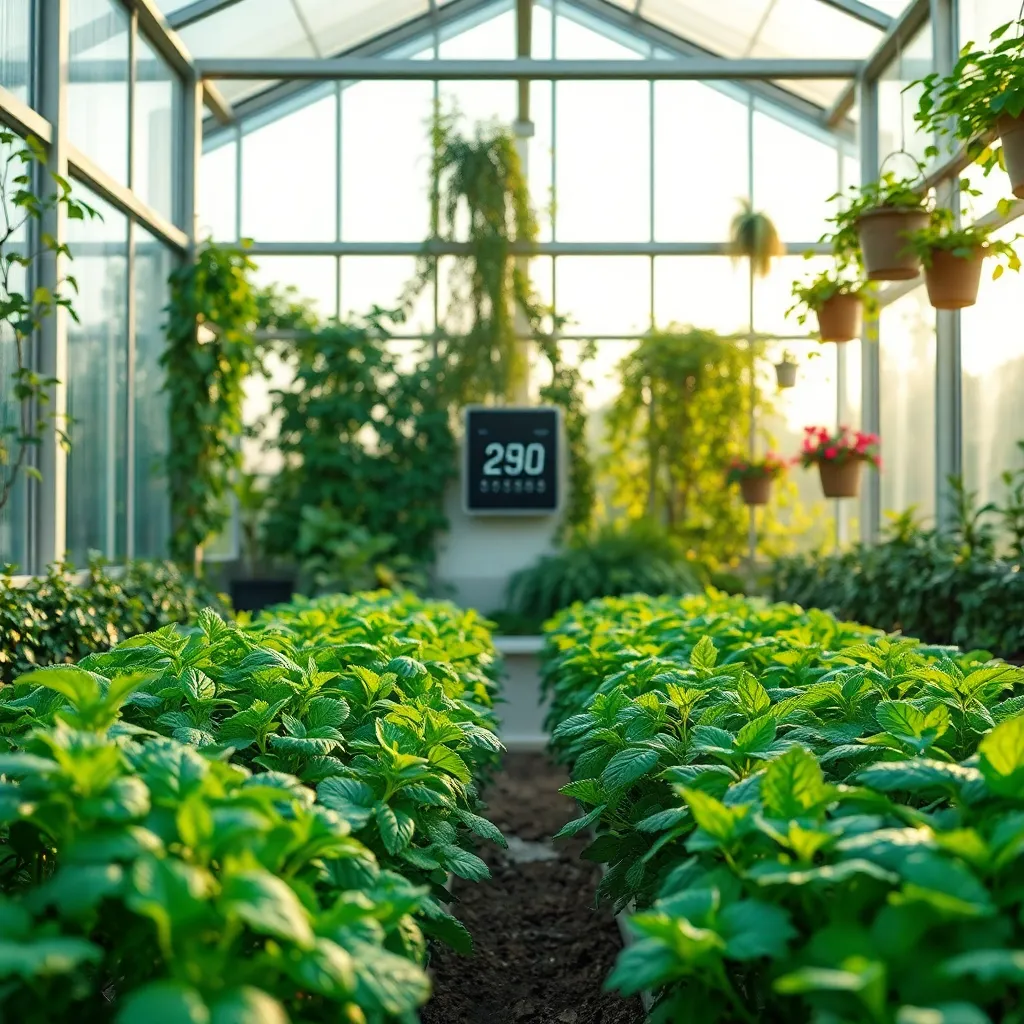
Integrating an automated temperature control system in your greenhouse can significantly enhance plant health and growth. By using thermostats and sensors, you can ensure that temperature changes are detected immediately, allowing the system to adjust heating or cooling as needed.
Modern systems offer the flexibility to program specific temperature ranges, ensuring your greenhouse environment is always optimal. For beginners, start with a simple setup that includes a digital thermostat connected to a fan or heater; this can make a noticeable difference in maintaining stable temperatures.
Advanced gardeners might consider integrating these systems with smart technology for remote monitoring and adjustments. By linking your temperature control to a smartphone app, you can receive real-time alerts and make instant changes, ensuring your plants remain in a consistently healthy environment.
To get the most out of your automated system, regularly calibrate sensors and thermostats to ensure accuracy. This can be done seasonally, and it’s as simple as comparing readings from your device with a reliable thermometer placed in the same location.
Efficient Watering and Irrigation Setup

Ensuring an efficient watering and irrigation setup in your backyard greenhouse is crucial for plant health and resource conservation. Begin by understanding the specific water needs of your plants, as different species have varying requirements for optimal growth.
To start, consider installing a drip irrigation system, which delivers water directly to the plant roots, minimizing evaporation and water waste. This system is particularly beneficial for greenhouse environments where precise control of moisture levels is essential.
Another effective strategy is to use a soaker hose for even water distribution, which can be laid out along rows of plants. This method is especially useful for those growing a variety of vegetables or flowers in a confined space.
For more advanced gardeners, integrating a timed irrigation system can further optimize watering schedules based on plant needs and weather conditions. This technology not only saves time but also ensures that plants receive consistent care, especially during peak growing seasons.
Installing Grow Lights for Winter Growth
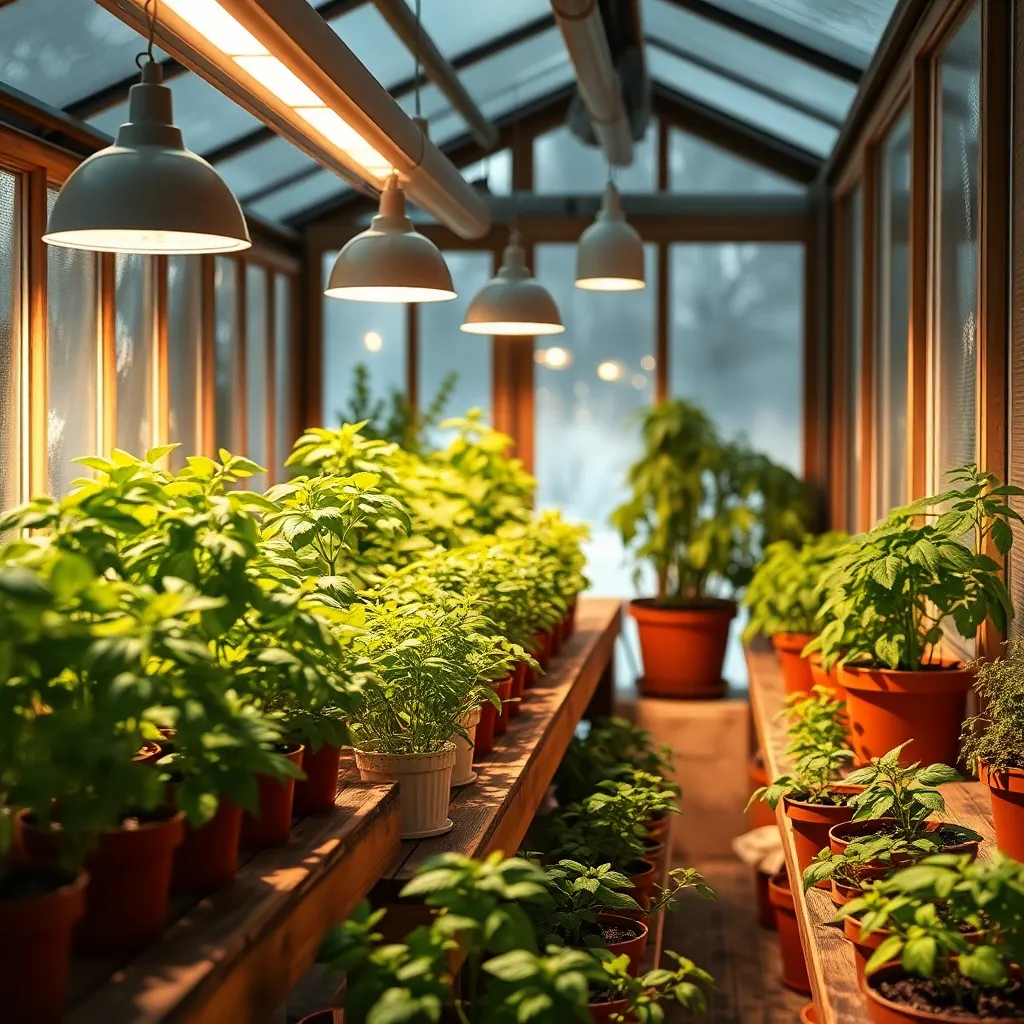
Grow lights are an excellent solution for promoting plant growth during the darker months of winter. By simulating sunlight, these lights help maintain healthy photosynthesis, keeping your garden thriving even when natural light is scarce.
For those new to grow lights, LED lights are a popular choice due to their energy efficiency and adjustable spectrum. Beginners should start by positioning the lights 6 to 12 inches above their plants to prevent overheating and ensure even light distribution.
Consider the specific needs of your plants when setting up your grow lights. Leafy greens like lettuce and herbs such as basil require about 14 to 16 hours of light per day, whereas flowering plants may need slightly less.
To maximize efficiency, use a timer to automate the light schedule and mimic natural day and night cycles. Advanced gardeners might experiment with different spectrums to encourage specific growth stages, such as using more blue light for vegetative growth and red light for flowering.
Organizing Shelves for Space Maximization

Organizing shelves in your greenhouse is crucial for maximizing space and ensuring efficient plant growth. Start by evaluating the height and spacing of your shelves to accommodate different plant sizes and light requirements.
Consider using adjustable shelving units, which allow you to customize the spacing as your plants grow. This flexibility is particularly useful for accommodating taller plants like tomatoes or for stacking smaller pots efficiently.
To further optimize your space, incorporate multi-tiered shelving systems. These systems enable you to grow more plants in a limited area, making them ideal for greenhouses of all sizes.
Ensure your shelves are sturdy and can support the weight of soil-filled pots, especially when watered. Metal or treated wood shelves are recommended for their durability and resistance to moisture.
For an added layer of organization, label your plants clearly on the shelves. This practice helps you keep track of different plant care routines, such as watering frequency and nutrient needs, ensuring each plant thrives in its specific conditions.
Starting Seeds with Greenhouse Warmth
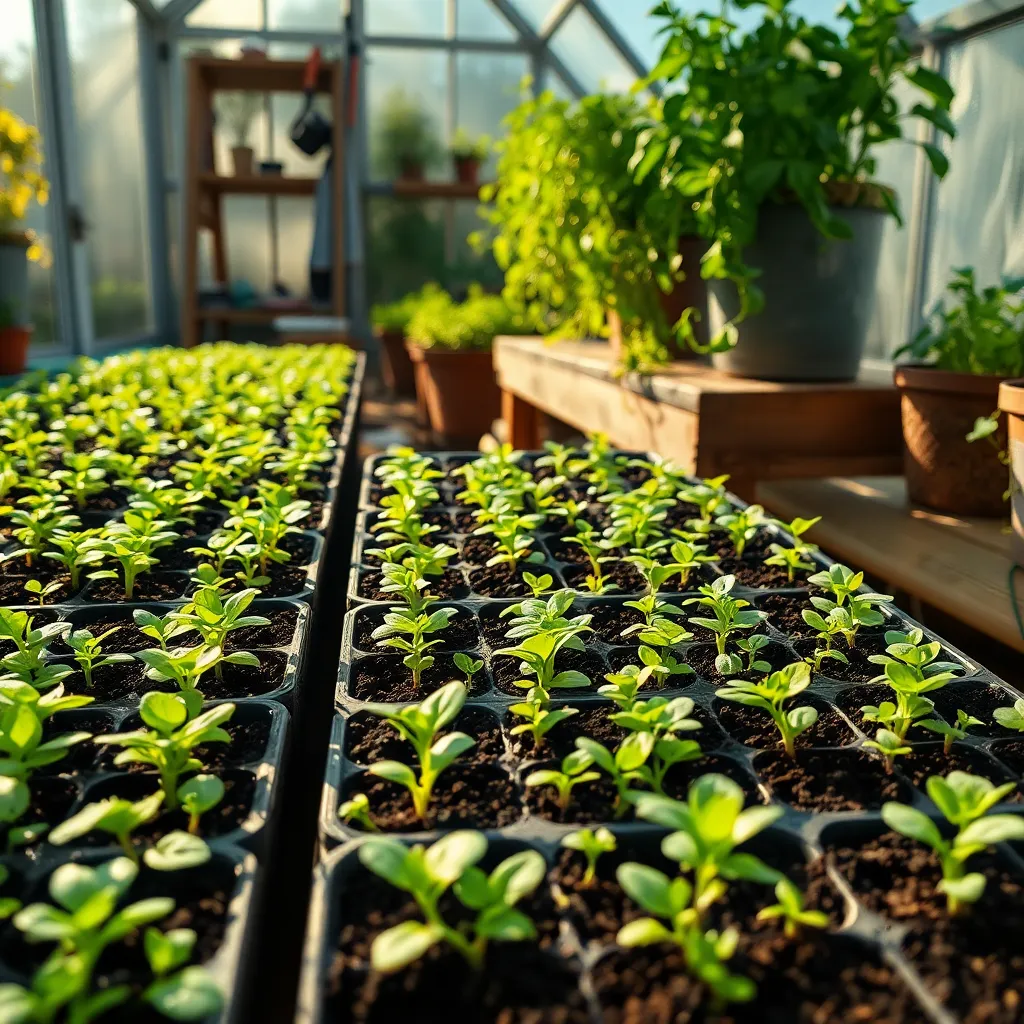
Using a greenhouse to start seeds is a fantastic way to extend your growing season and ensure a healthy start for your plants. The controlled environment protects seedlings from harsh weather and pests, giving them the best chance to thrive.
Begin by selecting a high-quality seed starting mix, which is typically lighter and retains moisture better than garden soil. Fill trays or pots with this mix, ensuring they have drainage holes to prevent waterlogging, which can be detrimental to young roots.
Keep the soil consistently moist, but not waterlogged, by watering gently with a fine spray. It’s important to monitor humidity levels within the greenhouse, as too much moisture can lead to mold growth on your seedlings.
As seedlings emerge, provide them with adequate light to prevent them from becoming leggy. Positioning them under grow lights or near the sunniest window in your greenhouse helps maintain robust growth.
For more experienced gardeners, consider using heat mats to maintain optimal soil temperatures, especially for warmth-loving plants like tomatoes and peppers. By doing so, you can improve germination rates and speed up seedling growth, ensuring a thriving garden come spring.
Pest Management Strategies Inside Greenhouses
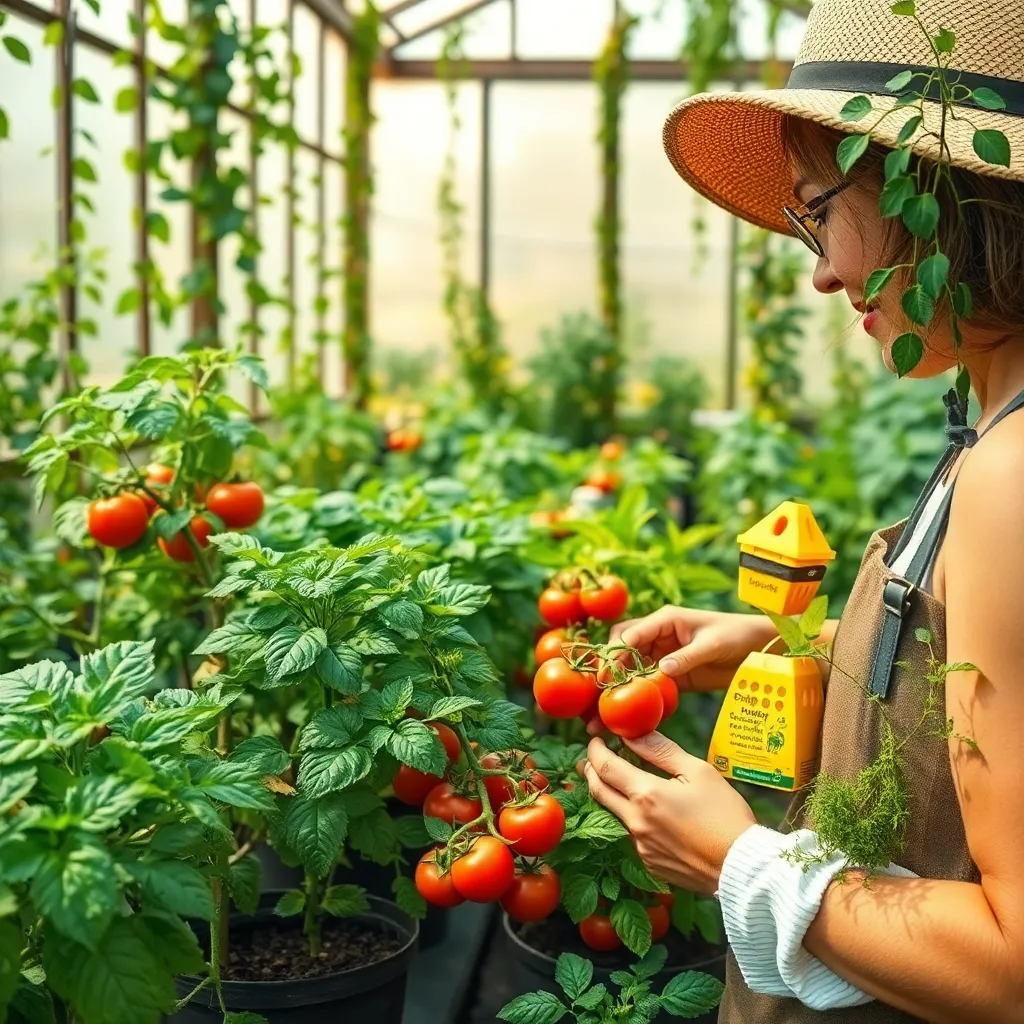
Managing pests inside greenhouses requires a combination of proactive strategies and timely interventions. Regular monitoring is crucial; inspect plants weekly for signs of pests like aphids, spider mites, or whiteflies, which often hide on the undersides of leaves.
Utilizing integrated pest management (IPM) can be highly effective in controlling pest populations. Incorporate natural predators such as ladybugs for aphids or predatory mites for spider mites, which can often be purchased in bulk from gardening suppliers.
Maintaining a clean environment is another essential step in pest control. Remove debris and fallen leaves promptly to eliminate potential breeding grounds for pests and fungi.
For those dealing with persistent infestations, consider using organic insecticidal soaps or neem oil, which are gentle on plants but effective against many common greenhouse pests. Always follow label instructions carefully to avoid damaging your plants while ensuring the treatments are effective.
Composting Systems for Nutrient-Rich Soil
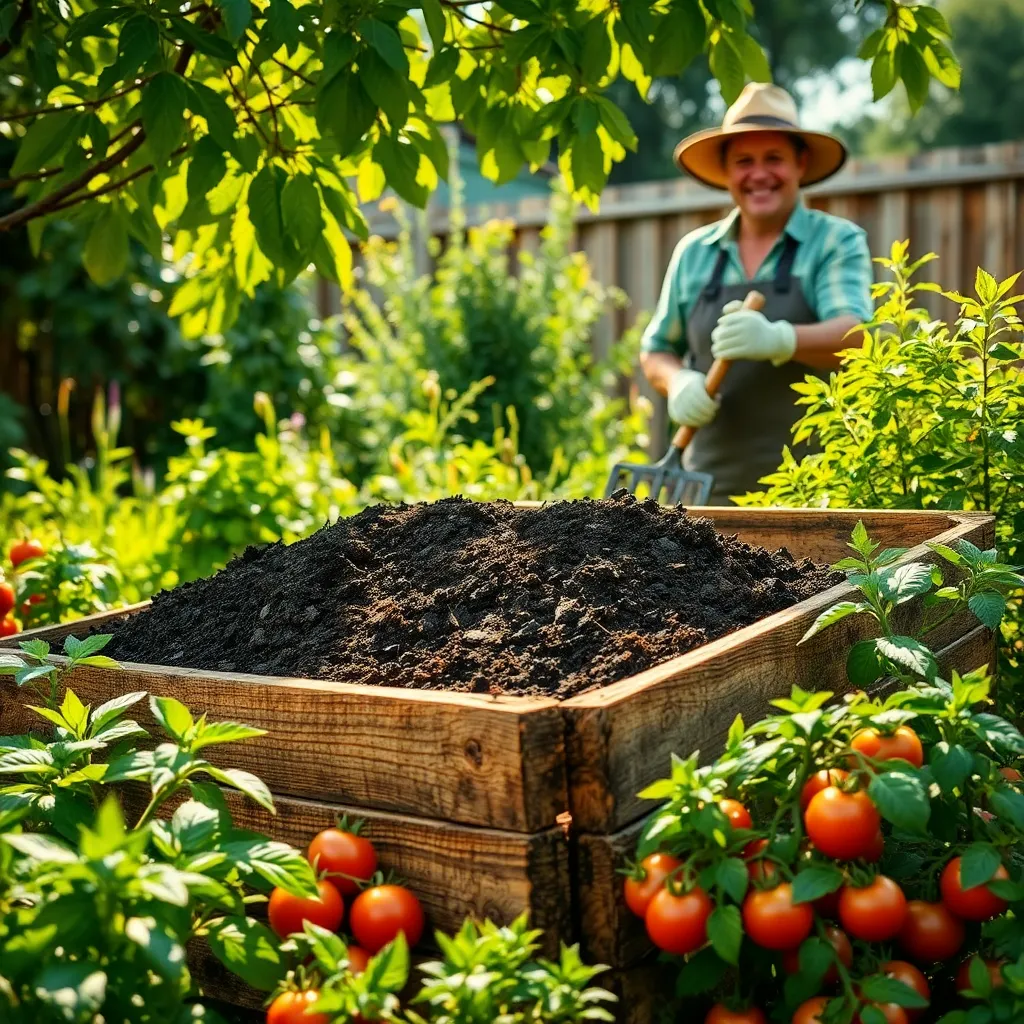
Composting is an excellent way to enrich your soil with vital nutrients, making it ideal for greenhouse gardening. To begin, choose a composting system that suits your space, such as a traditional compost pile, a compost tumbler, or a worm bin.
Each system has its own advantages: a compost pile is cost-effective and simple, while a tumbler speeds up the decomposition process. Worm bins are perfect for smaller spaces and produce nutrient-rich vermicompost.
For effective composting, layer green materials like fruit scraps with brown materials like dried leaves. Maintaining a balance of these materials and turning your compost regularly will ensure it breaks down efficiently.
Advanced gardeners might experiment with hot composting, which involves managing moisture and aeration to speed up decomposition. This method can produce compost in as little as 4 to 6 weeks, perfect for those eager to improve their soil quickly.
Seasonal Crop Rotation in Greenhouses
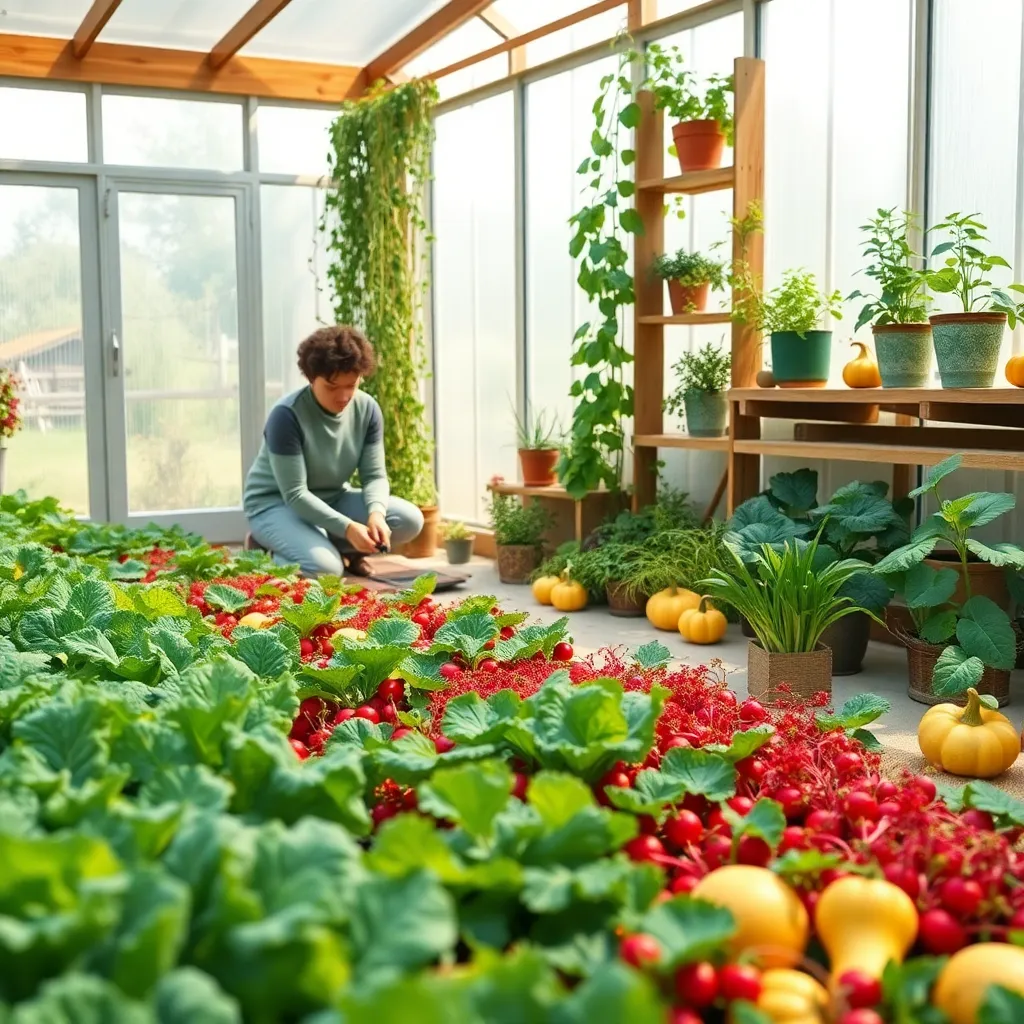
Seasonal crop rotation in greenhouses is a powerful technique to maximize yield and maintain soil health. By rotating crops, you can prevent soil depletion and reduce pest buildup, ensuring your greenhouse remains productive throughout the year.
Begin by planning your planting schedule based on the seasons and the specific needs of your crops. For instance, you can alternate between leafy greens and root vegetables, as these plants have different nutrient requirements and pest vulnerabilities.
Consider the soil type and its amendments, ensuring it is rich in organic matter for optimal plant growth. A mix of loamy soil with added compost or well-rotted manure typically provides a balanced nutrient profile, suitable for most crops.
For beginners, start with simple rotations, such as moving from spring lettuce to summer tomatoes. More experienced gardeners can experiment with advanced rotations, like incorporating nitrogen-fixing plants such as beans to rejuvenate the soil naturally.
Conclusion: Growing Success with These Plants
As we wrap up our exploration of the ’12 Essential Backyard Greenhouse Projects,’ we’ve uncovered a treasure trove of relationship insights. From the importance of nurturing communication like a delicate seedling, to the art of balancing independence and togetherness, each project symbolizes a key aspect of healthy relationships. We’ve learned the value of trust-building, the necessity of regular ‘relationship maintenance,’ and the joy of shared goals. Each project serves as a reminder that relationships, much like gardens, require attention, care, and creativity.
Now, it’s time to take the first step toward cultivating your own flourishing relationship. Choose one concept that resonated with you most, and discuss it with your partner today. Initiate a project together—whether it’s planning a date night or setting a new shared goal—let it be a seed for growth.
Remember, relationships thrive on consistent effort and mutual understanding. Bookmark this article to revisit these projects whenever you need guidance or inspiration. By investing in these principles, you’re sowing the seeds for a resilient, loving partnership that can weather any storm. Your journey towards relationship success starts now—nurture it and watch it blossom into something truly beautiful.

